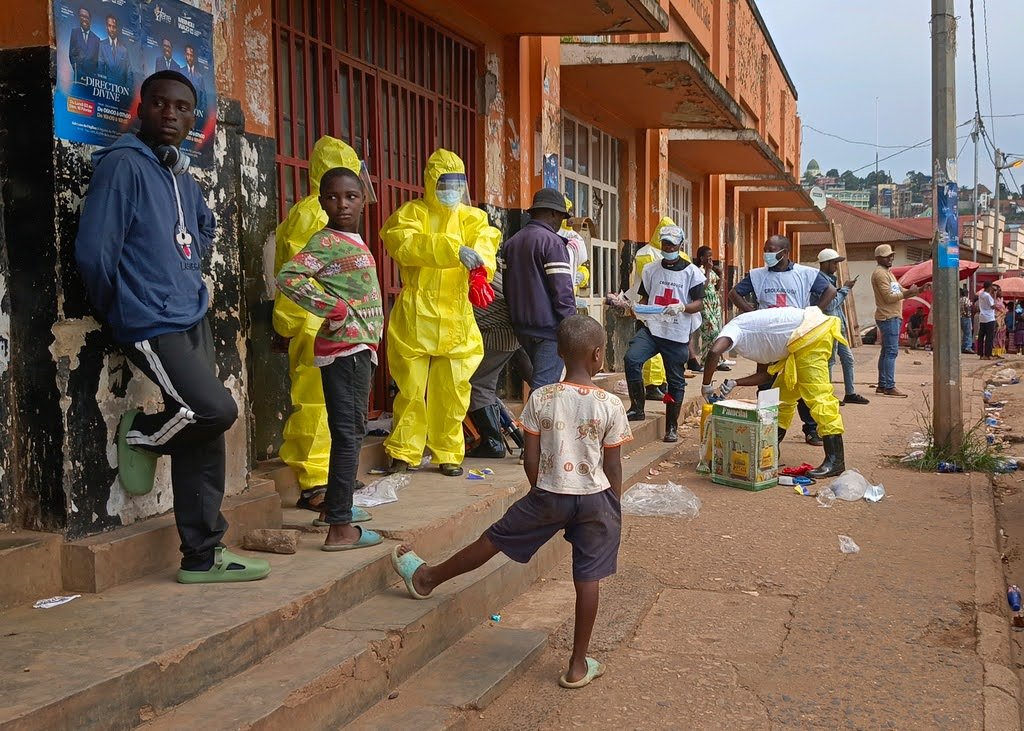M23 Rebels Accused of Recruiting and Killing Children in Eastern DRC by UN Officials
Red Cross workers collect the remains of a dead person in east Congo's second-largest city, Bukavu, one day after it was taken by M23 rebels, Monday, Feb. 17, 2025. (AP Photo/Janvier Barhahiga)
The M23 is a Tutsi-led militant group that was formed in response to a lack of proper integration of Congolese Tutsi into the army and administration of Congo. Their name references the 2009 accord that ended the previous Tutsi led rebellion. Their current insurgent attacks began in 2022 and quickly escalated during the invasion of Goma, Congo’s largest city. The group aims to protect Tutsi interests especially against other ethnic militia groups, such as the Democratic Forces for the Liberation of Rwanda (FDLR).
Rwanda has been accused of fueling the conflict inside Congo by supplying the M23 with arms and troops, but has denied the claims, stating that they have taken measures to protect their people against the FDLR, which has attacked Tutsis in both Rwanda and Congo. Though Rwanda originally denied the allegations, local residents reported seeing Rwandan military uniforms during the invasion of Goma. Eye witness accounts are backed by a July 2024 UN report estimate of approximately 3,000-4,000 Rwandan troops deployed in the Congo. In a briefing in New York, UN peacekeeping chief, Jean-Pierre Lacroix, stated, "there's no question that there are Rwandan troops in Goma supporting the M23."
Goma, which falls on the border with Rwanda, contains millions of already displaced people from eastern Congo and humanitarian aid groups. One of the aid groups, Save the Children, reported the first signs of civilian casualties when an explosive device fell on one of the many camps for displaced people. Now, the people who originally fled to Goma and surrounding areas in search of asylum are once again displaced in the midst of ongoing violence.
Pervasive violence from M23 has caused Burundi forces to withdraw from Congo as they struggle to halt the violence, though the Burundian military has denied these claims. The claims rose as the US accused M23 of executing children during advances into Congo’s largest cities, Goma and Kavumu. The UN Rights Office has confirmed not only the worsening conditions of civilians, but also the execution of three boys no older than 15 years. After refusing to give up weapons from an abandoned military camp, the three young boys were killed during the altercation. The murders are one of several reported crimes committed by the M13 group in addition to others including sexual violence. A December article published by the Guardian paints a picture of how citizens are targets of increasingly brutal violence, and reports of abductions, murders, and women raped at gun point have also surfaced. The aggressive and indiscriminate nature of the violence provoked accusations of an ethnic cleansing from the Congolese government. As conflicts worsen in Congo, civilians face growing threats to their safety and livelihoods, forcing them to search for safety elsewhere.
Between 10,000 and 15,000 people have fled to Burundi from around Bukav, leading to overcrowding. Furthermore, the journey is extremely dangerous and has resulted in several deaths from drowning during the required attempt to cross the Ruzizi River.
The violence in the Congo revives years worth of civilian trauma while threatening the safety of citizens. While war pervades the collective consciousness of Rwandan and Congolese citizens alike, the question of asylum seeking becomes evermore pressing and violence is spreading throughout the country as civilians struggle to find reprieve.

